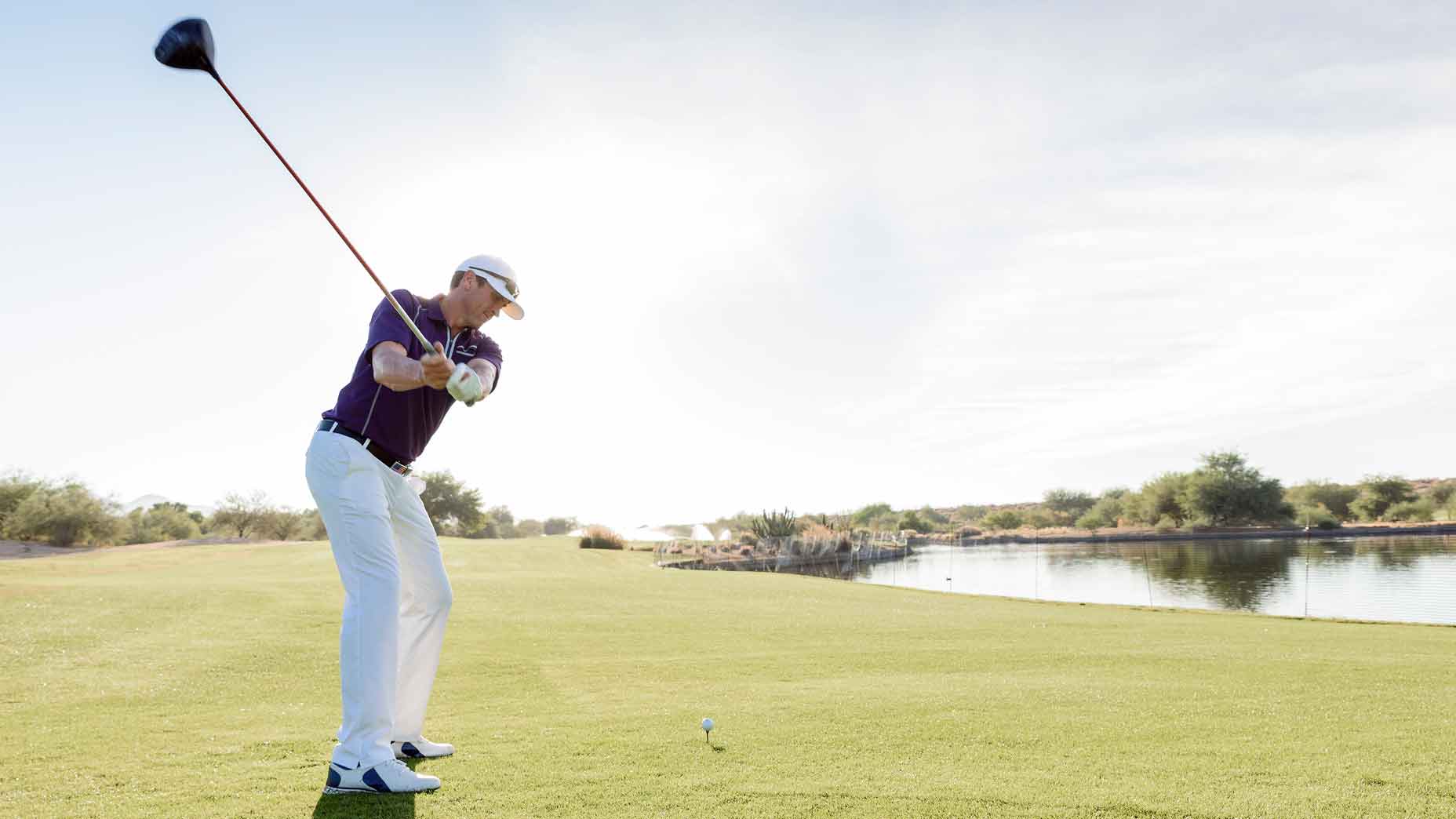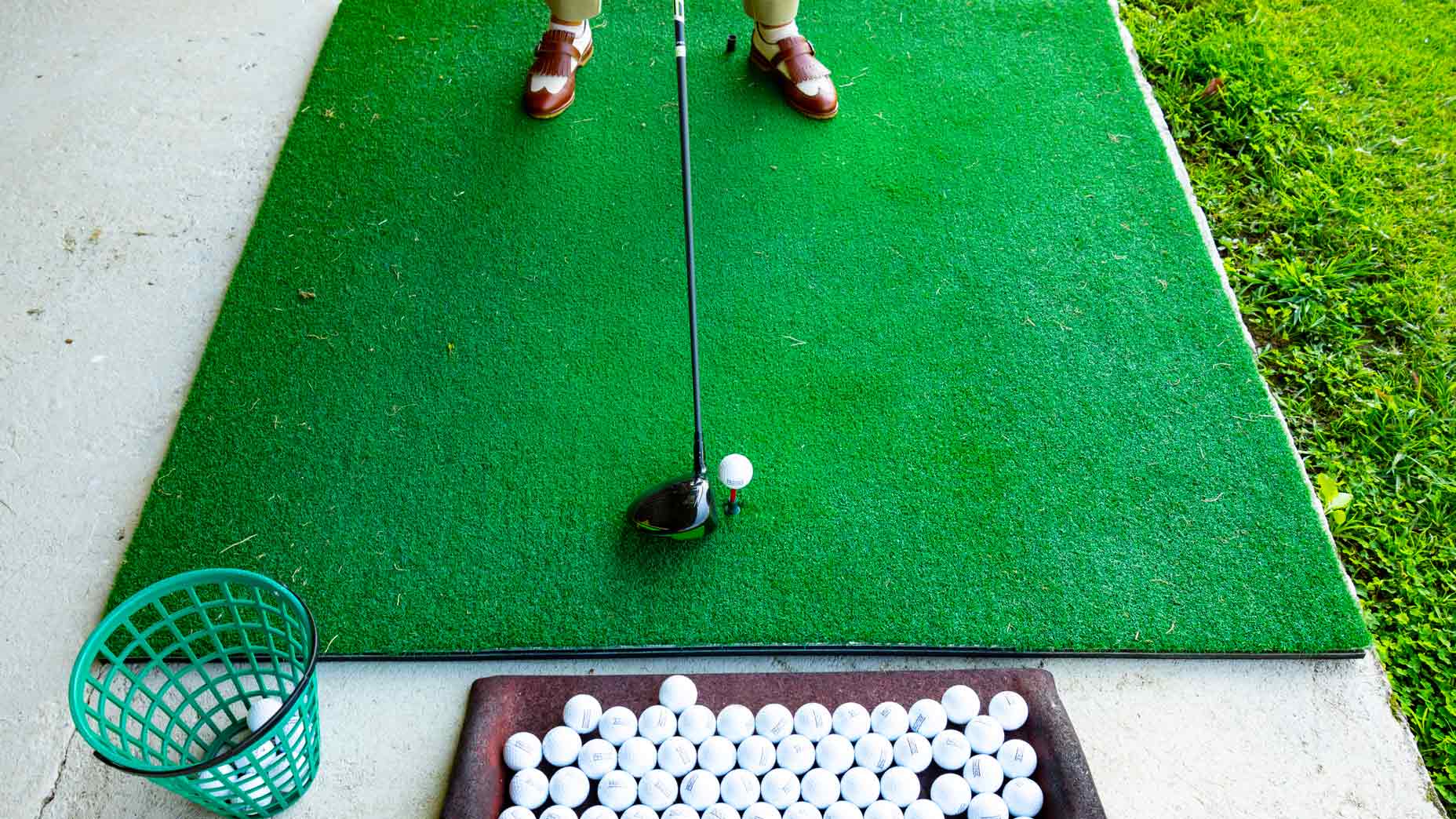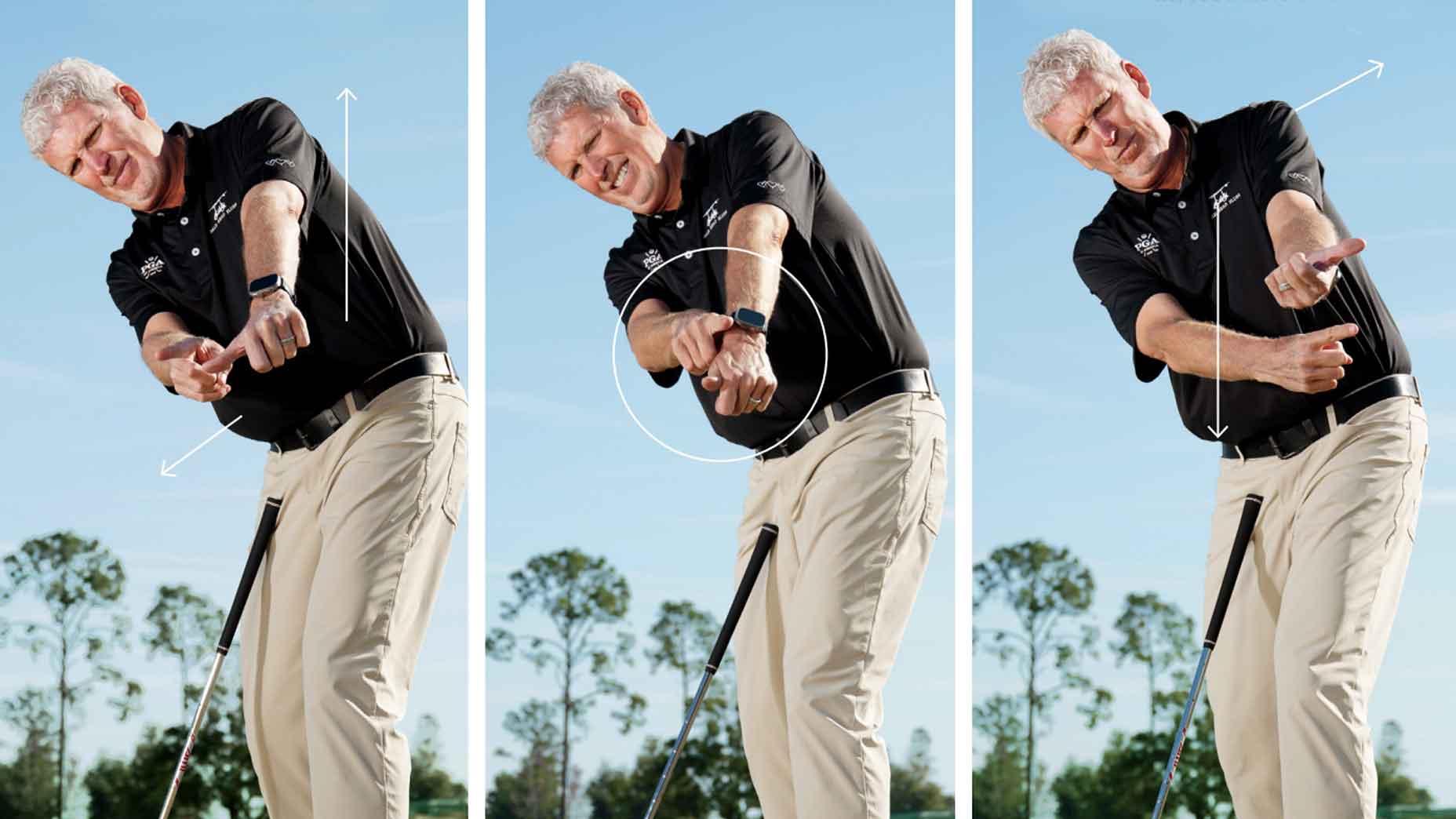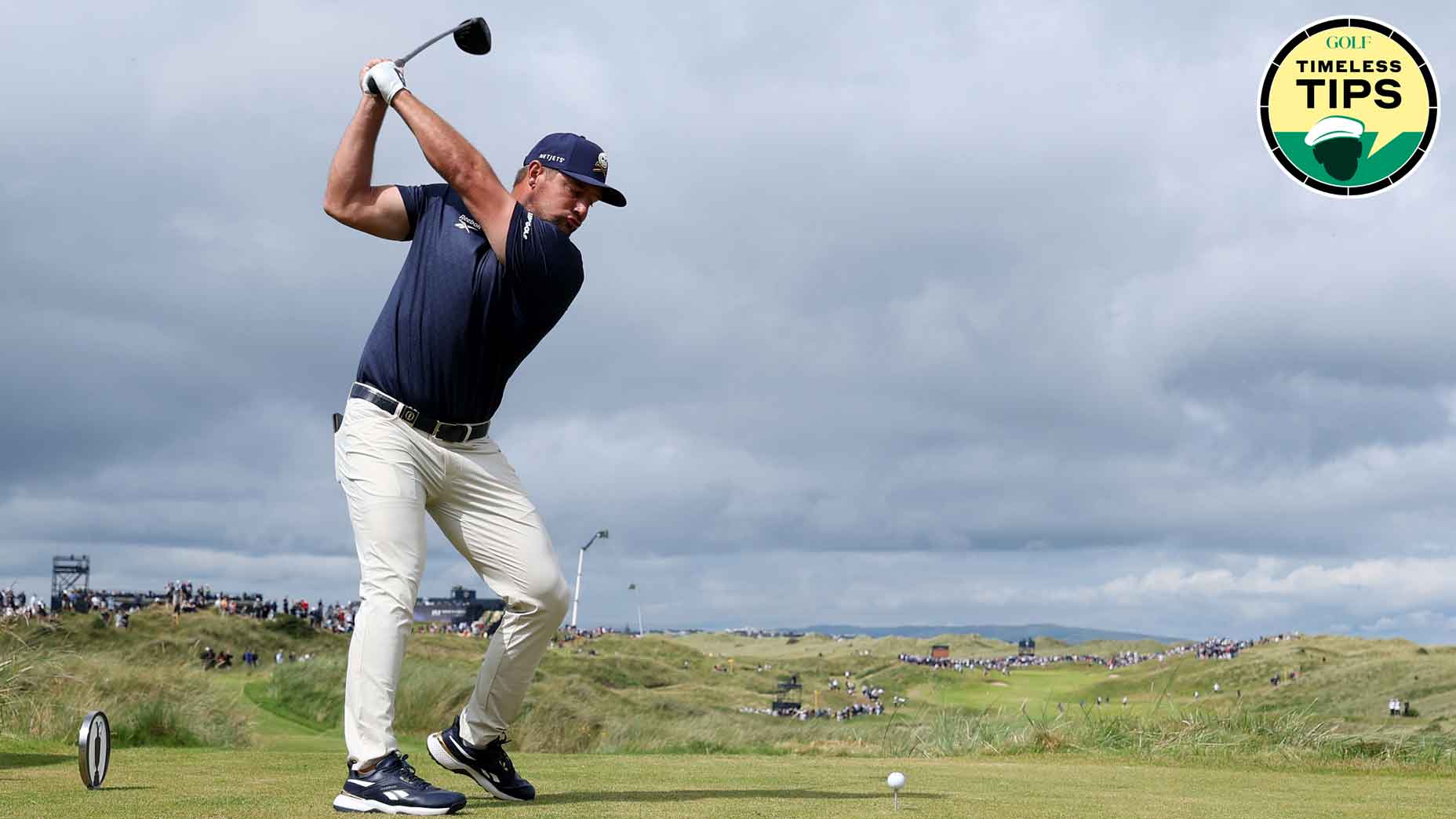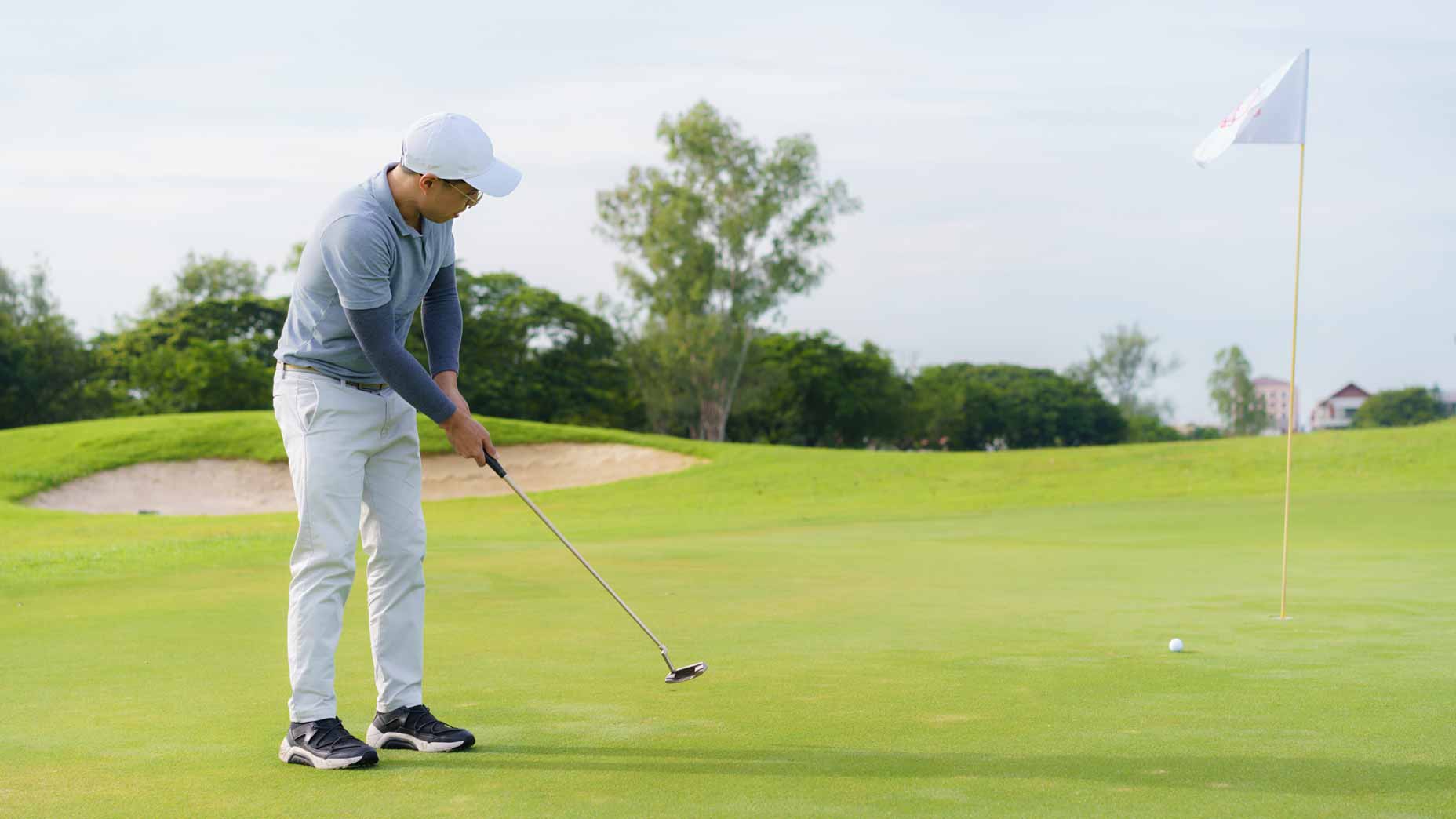When players learn how to transfer their good mechanics from the range to the course, they’ll instantly become better. But it’s not always easy for amateurs to do this.
Because golf requires strong muscle memory, learning the importance of proper aim and alignment can be the difference between an OK round and a great one. Instead of just hitting your ball, imagine seeing it go directly to where your target is. That should be the goal of every player.
To get a better understanding of how to aim and align the right way, take a look at the 10-step plan below — which will help you put together a strategy for your rounds ahead!
1. You can’t aim until you hit straight
Students often ask me how I can help them learn to aim better. In most cases, I start by making sure they have the ability to hit the ball straight enough to learn about aim — because aim is a skill that comes only with precision.
For players who struggle with missing the ball in both directions, aiming can be a challenge. So having reasonable fundamentals and good contact are necessary to be able to aim well.
2. Understand the difference between aiming your clubface and aligning your body
Many amateurs might think that aim and alignment are one in the same. That’s not the case.
Remember, you aim the clubface, but you align your body.
It’s important to distinguish the two because, generally, the clubface will point to the target, and you body alignment does not.
3. The clubface aims to the target
The clubface will have the greatest influence on where the ball travels after impact. That’s why it’s so important to try and hit the sweet spot of the club as often as possible.
Starting at address, when you aim the clubface, you want to be sure to use the leading edge of the club. This line should be perpendicular toward the direction where you want the ball to start.
4. Parallel body lines
Many of my students are often surprised when they realize that their body lines shouldn’t point to the target. Instead, players should be parallel to the target line, but not at the target.
When aligning your body, you want to set your body lines relatively parallel to the aim line instead of right at the target.
5. The optical illusion
Since golfers stand to the side of the ball, part of the challenge of aiming and alignment can be an optical illusion.
Unlike a sport like basketball — in which players shoot straight toward their target — golfers don’t experience that. Because your eyes are on the side of the ball, it’s common to feel like you’re incorrectly aligned. But you may actually be in the ideal position.
This is another reason why both aim and alignment needs to be practiced. It’s a tough skill to master.
6. Practice with an alignment aid
Give yourself as many options as possible when practicing your aim and alignment.
One simple way is using one of your golf clubs and placing it on the ground — pointing it toward your target line. Another option is to purchase alignment sticks, setting them parallel to each other so that the line between the two is pointing to your target.
7. Use your lead shoulder relative to the target
Once you determine your ideal setup, point your lead shoulder toward the target. This will help gauge where you need to hit your shot.
For me, when I’m set up properly, my left shoulder looks about 10 yards left of the target. This means my aim and alignment are correct.
8. Choose an intermediate target
Choosing an intermediate target is a popular aiming method that many pro players often utilize.
To do this, stand behind your ball, picking a spot on the ground that’s between one and four feet in front of your ball. If the ball carry over this spot, ideally it would go toward your target.
As you setup to the side of the ball, aim your clubface directly over this spot. Next, set your feet parallel to the line between your ball and this spot, then take your shot.
9. Use the line on the ball
There are two times when the line on the ball can help you aim. The first one is a bit more obvious, with many people doing this to help them determine their putting line.
But you can also use the ball lines on your tee shots. When on the tee, use the ball line to point where you want the ball to start. Once again, set your clubface perpendicular and make your body lines parallel.
By doing this, you’ll feel confident that your aim is correct.
10. Practice, practice, practice
Although many golfers assume they should automatically be good at aiming and aligning, it’s important to remember that it’s a learned skill. This is where attitude comes into play.
For players willing to practice and earn the skill, they will experience the most success. So don’t overlook the importance of repetition.
Latest In Instruction

Golf.com
